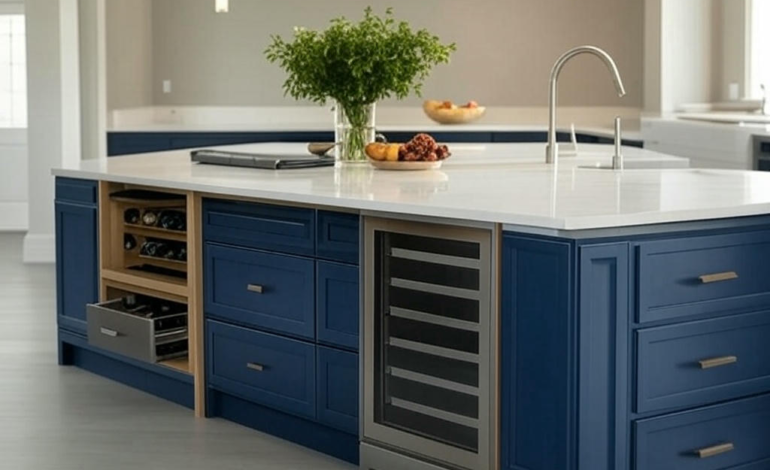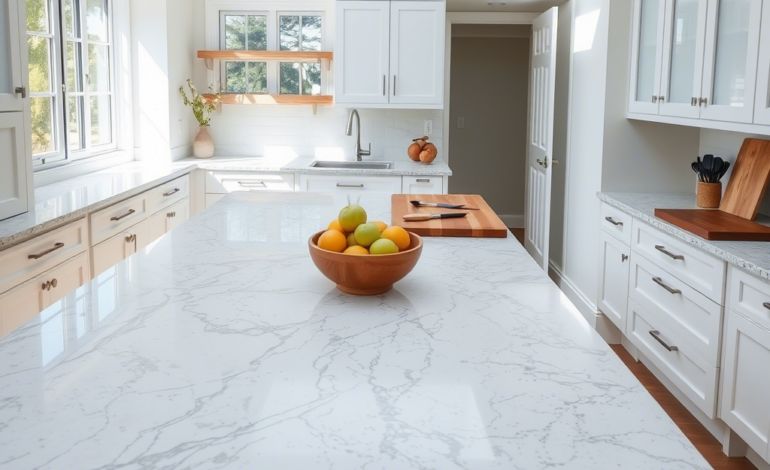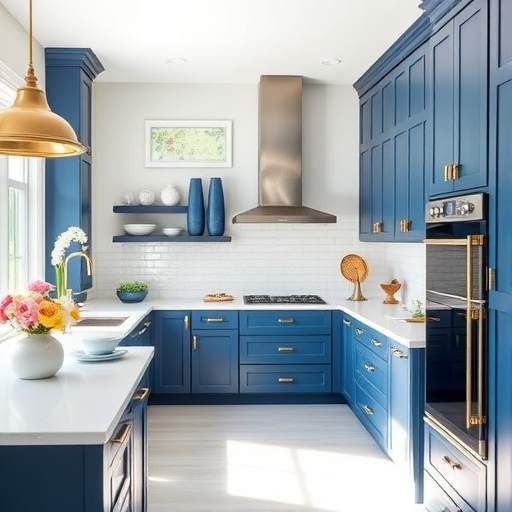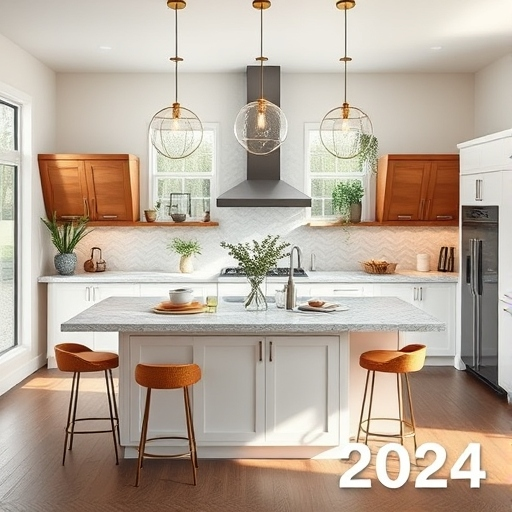
Ultimate Kitchen Island Design: 10 Tips to Transform Your Space in 2025
A well-designed kitchen island can transform your cooking space into a hub of style and efficiency. By focusing on kitchen island design, you can maximize storage, enhance decor, and choose materials that blend durability with aesthetics. Whether you prioritize functionality for meal prep or a stylish centerpiece, this guide covers everything you need to create your dream kitchen island.
Introduction
Imagine this: You’re hosting a dinner party, and your kitchen feels cramped. Guests awkwardly shuffle around countertops, and you’re stuck digging through cluttered cabinets. Sound familiar? A thoughtfully designed kitchen island could be your saving grace. Beyond extra counter space, it’s a multifunctional workhorse that anchors your kitchen’s aesthetic and workflow. Let’s dive into how to design an island that’s as practical as it is Pinterest-worthy.

Why Kitchen Islands Matter: Function Meets Style
A kitchen island isn’t just a trendy upgrade—it’s a Y.M.Y.L (Your Money Your Life) investment that impacts your home’s value and daily convenience. According to the National Kitchen and Bath Association (NKBA), 70% of homeowners prioritize islands in renovations due to their versatility. Here’s how to nail yours:
1. Define Your Island’s Purpose
Before choosing materials or colors, ask: What do I need most?
- Meal prep station: Opt for heat-resistant countertops like quartz or butcher block.
- Entertainment hub: Add seating (bar stools) and under-counter storage for glassware.
- Storage powerhouse: Incorporate pull-out drawers, shelves, or a built-in wine rack.
2. Material Magic: Balance Durability and Design
Your choice of island materials affects both longevity and look. Check out this comparison:
| Material | Pros | Cons | Best For |
|---|---|---|---|
| Quartz | Non-porous, scratch-resistant | Higher cost | High-traffic kitchens |
| Butcher Block | Warm, rustic vibe; food-safe | Requires regular oiling | Baking/casual dining |
| Stainless Steel | Durable, easy to clean | Shows fingerprints | Modern, industrial designs |
Source: NKBA 2023 Kitchen Trends Report
3. Layout & Size: Avoid Common Mistakes
A too-small island feels awkward; a too-large one overwhelms the space. Follow these rules:
- Leave at least 36 inches of walking space around the island.
- For seating, allow 24–30 inches per stool and 15 inches of knee clearance.
- Match the island’s height to your countertops (typically 36 inches) unless designing a two-tier setup.
Pro Tips for Elevating Kitchen Decor
Your island should complement your kitchen’s overall style. Try these ideas:
- Contrast is key: Paint the island a bold color (e.g., navy) against white cabinets.
- Light it up: Hang pendant lights 30–36 inches above the island for ambiance.
- Add greenery: Place herbs or a small plant centerpiece for a fresh touch.

FAQs
Q1: How much does a custom kitchen island cost?
A basic island starts at $3,000–$5,000, while high-end designs can exceed $15,000. Material choice (like marble vs. laminate) and added features (appliances, plumbing) impact costs.
Q2: Can I install a kitchen island in a small kitchen?
Yes! Opt for a mobile island or a narrow design (24–30 inches wide). Avoid bulky bases to maintain openness.
Q3: What’s the best countertop material for baking?
Butcher block or marble are ideal for rolling dough. Quartz is a low-maintenance alternative.
Q4: Should my island match my cabinets?
Not necessarily! Contrast creates visual interest. Pair light cabinets with a dark island or vice versa.
Q5: How do I add storage without sacrificing style?
Use open shelving for cookbooks, decorative baskets for utensils, or hidden cabinets with sleek hardware.
Q6: Can I DIY a kitchen island?
Simple designs (e.g., a reclaimed wood slab on legs) work for DIY. For plumbing or electrical needs, hire a pro.
Q7: What’s trending in kitchen island design?
Two-tone finishes, waterfall edges, and integrated appliances (like a built-in microwave) are hot in 2025.
Q8: Are kitchen islands outdated?
No! They remain a top request in renovations. Modern designs focus on multifunctionality (e.g., charging stations).
Key Takeaways
- Prioritize functionality (storage, seating, prep space) before aesthetics.
- Use durable island materials like quartz or butcher block for longevity.
- Follow NKBA guidelines for size and spacing to avoid costly mistakes.
- Mix textures and colors to make your island a kitchen decor focal point.
Conclusion
Your kitchen island is more than a countertop—it’s the heart of your home. By blending smart island design, high-quality materials, and personalized decor, you’ll create a space that’s both beautiful and functional. Ready to start planning? Share your dream island ideas in the comments below!





